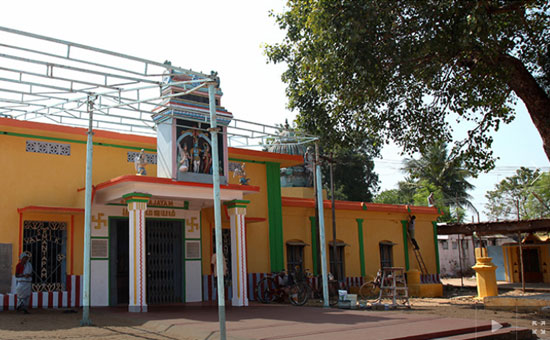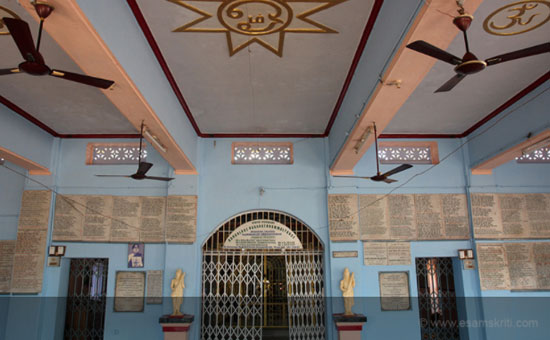- This
article tells about the 4 basic elements and relevance of Carnatic music.
Carnatic
music is one of the most beautiful gifts of that Indian culture has given to
the world. Did you know that many Western music concepts, including the circle
of fifth, are inspired by Carnatic music? And it even has a role to play in
deriving Pythagoras theorem! When Pythagoras visited India, he got inspired by its
heptatonic scale. Concerts of Carnatic music are not only popular in India but
worldwide.
Carnatic
music is a genre of Indian classical music. The other form of Indian classical
music is Hindustani music, which is inspired by Persian and Islamic invasions. Carnatic classical music was able to
retain its purity of form and originated in the state of Karnataka.
It
is the most ancient form of Indian classical music. Mention of Carnatic music
can be found in Hindu scriptures, which are thousands of years old. Carnatic
music is supposed to be performed with Gayki (singing) only.
It
is composed of an instrumental ensemble, with the singer being in the center of
the performance. The notes can be customized according to individual
compositions. Yet, the essential elements of Carnatic music remain the same.
4 Major Elements of Carnatic Music
Shruti
Shruti
is the raw sound of Carnatic music. It is the musical pitch of the composition.
All other elements can go up and down, but the shruti of the piece will remain
the same throughout the performance. All the notes of composition will always
be connected to Shruti. Thus it is most important amongst all the elements of Carnatic
music. Shruti is to Carnatic music what the key is to western music.
There are many sounds in a single scale of Carnatic music. Auditory perceptions recognize 22 shrutis. But auditory perception alone can’t be the parameter of shruti. It is also determined by the listener’s perception.
Swara
Swara of a song takes the composition to higher and lower notes playfully. There are seven swaras in Carnatic music. They are –
Shadja
Rishabha
Gandhara
Madhyama
Panchama
Dhaivatanishada
You
can call them musical notes or solfege of Carnatic music. They are generally
known by their short forms - sa-ri-ga-ma-pa-da-ni. All seven swaras are derived
from the sounds of birds and animals.
Every
swara is comprised of three elements apart from Sa and Pa as these notes are
drone notes. If you are a music enthusiast, you will enjoy learning the
detailing of each swara. Although they are only 7 in numbers there is an entire
universe of knowledge inside them.
 Tyagaraja Samadhi, Tiruvar, Tamil Nadu.
Tyagaraja Samadhi, Tiruvar, Tamil Nadu.
Raga
As
we talked about 7 swaras, raga is the alignment of the swara in a composition.
A samporna raga will include all 7 notes in ascending or descending pitch.
These pitches are called arohanam and
avrohanam.
Raga is the system of the song which generates its melody.
There
are 72 Sampoorna ragas. A Raga is
consists of gamkas. Gamkas are the
ornamentation of Carnatic music. They are various activities that make the raga
flow up and down in a song. They make a song engaging.
The
most recognized categorization of ragas is Janaka
raga and Janya raga. Janaka is the
parent ragas from which Janya ragas are derived. Ragas are also classified
based on the time of the day they are generally played.
Tala
Any
song or musical composition cannot be created without beats and rhythm. This combination
of beats and rhythm of music is known as Tala.
There
can be as many as 108 varieties of tala. Carnatic singers create tala by using
hands and figures periodically. They do that to remember the required interval
of time for each tala. Adi tala,
which plays 8 beats in a cycle, is the most popular tala in Carnatic music.
Basically,
talas are comprised of 3 parts. angas,
dhrtam, and anudhrtam. Some complex talas have 2 more features, namely plutam, guru, and kaakapaadam. Some other popular talas of Carnatic music are –
Dhruva
Tala
Eka
Tala
Jhampa
Tala
Matya
Tala
Rupaka
Tala
Triputa
Tala
The
above-listed talas are composed of the laghu,
dhrtam, and anudhrtam. Tala remains uniform throughout the Carnatic
composition.
 Inside Tyagaraja Samadhi, Tiruvarur.
Inside Tyagaraja Samadhi, Tiruvarur.
The relevance of Carnatic Music
Carnatic
music was revolutionized in the 18th century by the trinity of Carnatic music.
Three musical legends of that century came forward for innovation of Carnatic
music. They were Saint
Tyagaraja, Muthuswami Dikshitar, and Syama Sastri.
The
credit for the global popularity of Carnatic music goes to this revolution. The
Carnatic music became scientifically systematized and relevant for coming
generations by the reforms of this trinity.
Today
concerts of Carnatic music are held worldwide. Its song recordings are in demand.
Both the forms of Carnatic music, i.e., vocal and instrumental, have their different
fan base. Many great vocalists and composers made their careers in the field of
Carnatic music. Some of the notable Carnatic music singers are Aruna Sairam,
K.J. Yesudas, and Dr. P. Unni Krishnan.
Author is a content creator at Acharyanet, a platform for Carnatic music learners where they can learn music from gurus through 400+ video lessons. Being a music enthusiast and a history buff, she provides value for readers. She loves to volunteer with music therapy groups and bakes up a storm in her free time. Article pics are courtesy Sanjeev Nayyar.
To
see pictures of Thyagaraja Mandir, Tiruvur
Read about the
Trinities of Carnatic Music
Read
The Story of Pythagoras